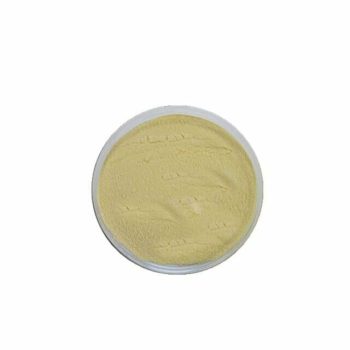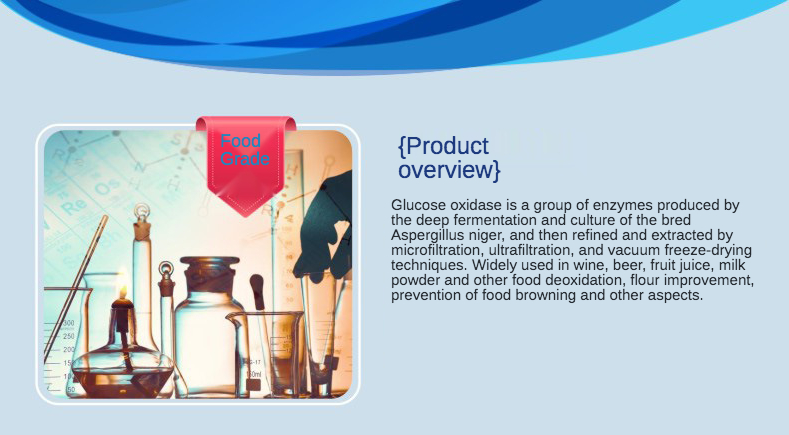
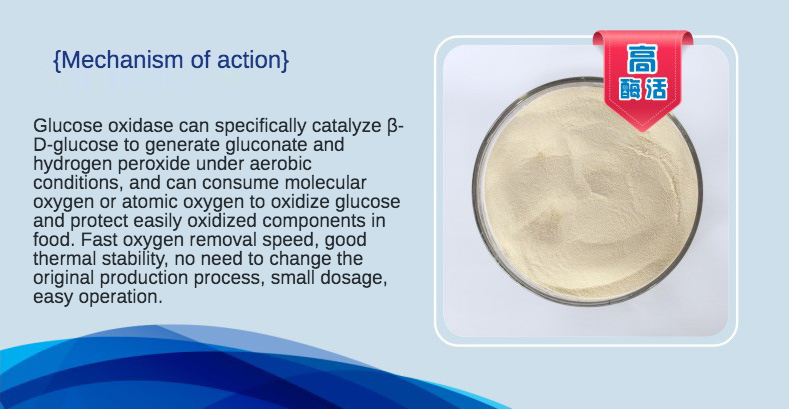
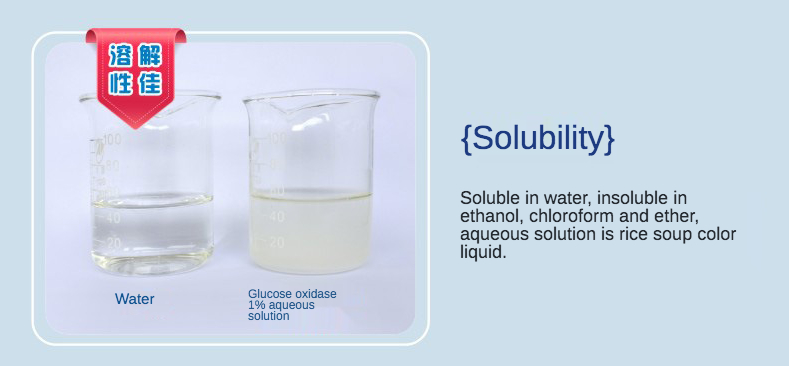



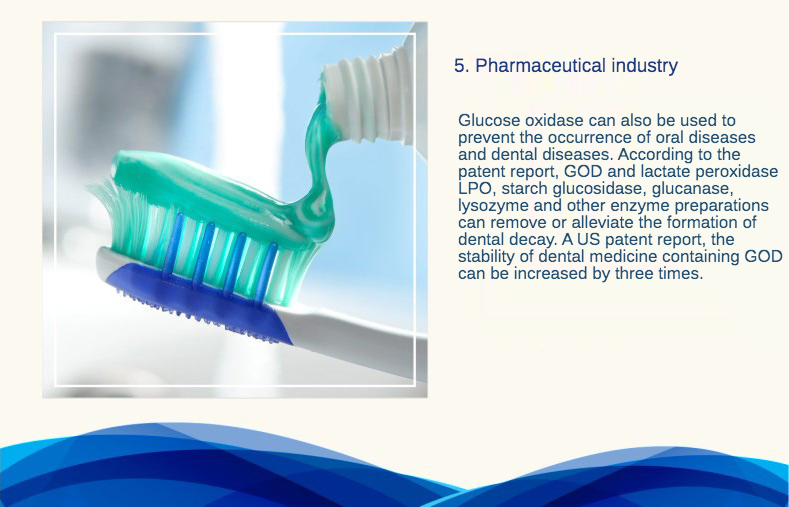
Glucose Oxidase is a group of enzymes extracted by deep fermentation culture of selected Aspergillus niger, followed by microfiltration, ultrafiltration, and vacuum freeze-drying technology. It is widely used in deoxygenation of wine, beer, juice, milk powder, and other foods, flour improvement, prevention of food browning, etc.
Glucose Oxidase can specifically catalyze β-D-glucose to generate gluconic acid and hydrogen peroxide under the condition of oxygen, and can consume molecular oxygen or atomic oxygen to oxidize glucose and protect the easily oxidized components in food. Fast oxygen removal speed, good thermal stability, no need to change the original production process, small dosage, easy to operate.
Soluble in water, but insoluble in ethanol, chloroform, and ether, aqueous solution is beige liquid.
Product Name: Glucose Oxidase
Main Components: Glucose Oxidase, Glucose
Product Specification: 10,000 U/g (can be customized)
Product Properties: Light Yellow Powder
Storage: Room Temperature, Dry and Protected from Light
Shelf Life: 12 Months
Introduction
Application
– Flour Improvement: Adding glucose oxidase to wheat flour and corn flour can improve the gluten of flour, mainly through the oxidation of hydrogen peroxide generated by glucose oxidase in the oxidation process oxidizes the sulfhydryl groups in gluten protein to form disulfide bonds, thus enhancing the network structure of dough.
– Wine Brewing: Glucose oxidase is applied in wine brewing to oxidize glucose to gluconolactone, which consumes oxygen and produces hydrogen peroxide as a bactericide, reducing the contamination of miscellaneous bacteria and maintaining the stability of product quality. In beer, it can remove dissolved oxygen in beer, prevent beer from being oxidized and darkened, prevent beer from aging, and prolong its shelf life.
– Food Preservation: Glucose oxidase can also be used in juice preservation, tea preservation, shrimp preservation, the principle is also through the removal of oxygen in food, to achieve the purpose of antibacterial preservation to extend the shelf life.
– Feed Processing: Adding glucose oxidase to feed can remove a large number of free radicals produced by the intestinal epithelial cells of livestock, and protect the intestinal epithelial cells; at the same time, the gluconic acid formed by the action reduces the p-leaf value of the gastrointestinal tract, which is more conducive to the proliferation of probiotics and promotes the digestion of feed, and also improves the immunity of livestock.
– Pharmaceutical Industry: Glucose oxidase can also be used to prevent oral diseases and dental diseases. According to the patent report, GOD and lactate peroxidase LPO, amyloglucosidase, dextranase, lysozyme, and other enzyme preparations can remove or alleviate the formation of dental caries, and the U.S. patent reports that the stability of dental medicine containing GOD can be increased by three times.
Characteristics
– Solubility: Soluble in water, but insoluble in ethanol, chloroform, and ether.
– Aqueous Solution: Beige liquid.
Specifications
– Product Name: Glucose Oxidase
– Main Components: Glucose Oxidase, Glucose
– Product Specification: 10,000 U/g (can be customized)
– Product Properties: Light Yellow Powder
Recommended Dosage
– The recommended dosage may vary based on applications and should be determined according to specific use conditions.
Safe Handling Precautions
– Follow standard safety protocols when handling enzyme products to prevent allergic reactions or sensitivities.
Package
– 1 kg / bag.
Storage
– Store at room temperature, dry and protected from light.
Shelf Life
– 12 months.
Safety
– Ensure proper safety measures are taken during use to avoid any potential hazards.



